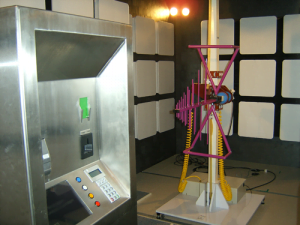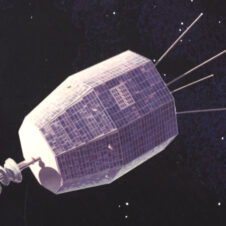
Electromagnetic Compatibility Inspection. Credit: Franz Schlagenhaufer
The National Association of Testing Authorities, Australia (NATA), has recently accredited ICRAR as an inspection body for Electromagnetic Compatibility (EMC).
Ensuring that electronic equipment doesn’t produce interference for radio telescopes is one of the challenges faced by every radio observatory. To maintain the pristine radio-quiet environment of the Murchison Radio-astronomy Observatory, all equipment on-site must pass rigorous EMC testing and assessment.
ICRAR is helping ensure that any electrical components intended for the Murchison Radio-astronomy Observatory have been tested and conform to interference standards at the site.
As part of the accreditation process, NATA ensures that bodies have access to adequate tools, with the experience to use them and have procedures in place for conducting the assessment.
ICRAR’s scope of accreditation covers two main areas, assessment of electrical and electronic products against relevant standards for EMC and electromagnetic field modeling. The modeling of electromagnetic fields is not only based on known antenna characteristics, it also takes into account the effects of the surrounding environment. It is therefore applicable in cases where structures near the component influence the radiation pattern and in any case of un-intentional emission. This is the case with some components that will be used on site at ASKAP, the MWA and the future SKA.
EMC requirements for equipment on the MRO site are more stringent than the Australian EMC regulation, known as the ‘EMC Framework’, and related tests and assessments are, strictly speaking, outside the scope of any NATA accreditation. However, ICRAR’s accreditation as an inspection body demonstrates the familiarity with state-of-the-art test and assessment methodologies. It also forces ICRAR to stay in touch with standardization bodies and regulatory authorities, and thus keep abreast of any developments in the field. It also makes ICRAR an ideal platform for the sharing of knowledge between testing authorities in Australia, from which ICRAR can learn new methods, but also give advice and guidance to its industry partners.
Having an accredited inspection body so close to the Murchison Radio-astronomy Observatory will be beneficial as more equipment is required on site for the telescopes.

